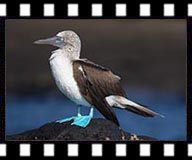Day 5 (Thursday, May 24): Isabela Island (Elizabeth Bay and Tagus Cove)
Isabela is the largest island in the Galapagos, and we made the most visits. The night before we anchored in Elizabeth Bay. The plan was to see the sunrise, then explore the mangrove cove. Unfortunately, it was very cloudy in the morning, only a crack in the clouds allowed the sun to appear momentarily (but, if the start of the day was somewhat muted, it certained ended with a bang. Read on.).
(Click on each image to see the high-resolution version)
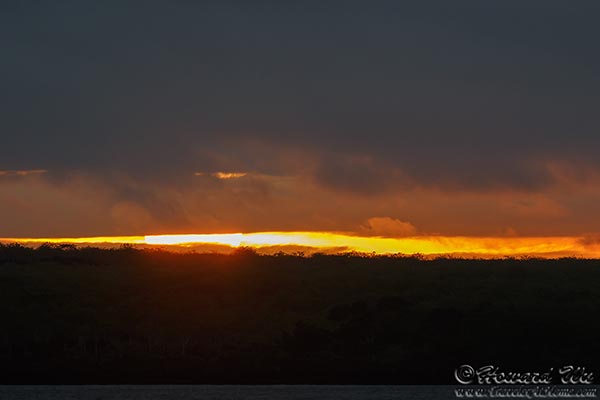
Sunrise at Elizabeth Bay
The ubiquitous Yellow Warblers were very active on this morning and greeted us from the mangrove tree branches.
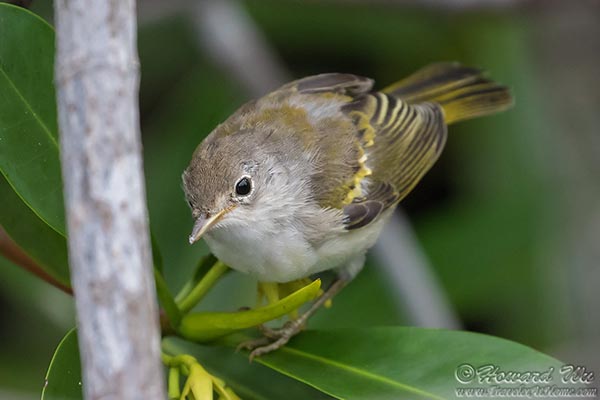
Yellow Warbler
Elizabeth Bay is a nice place to see See Turtles and even rays and sharks up close. Unfortunately, the thick cloud cover meant very dim light in the mangroves, which made it difficult to take pictures from a rocking panga.

Sea Turtle
On the rocks in the open water, Flightless Cormorants were nesting. I also saw a couple of Wandering Tattlers there (not shown).
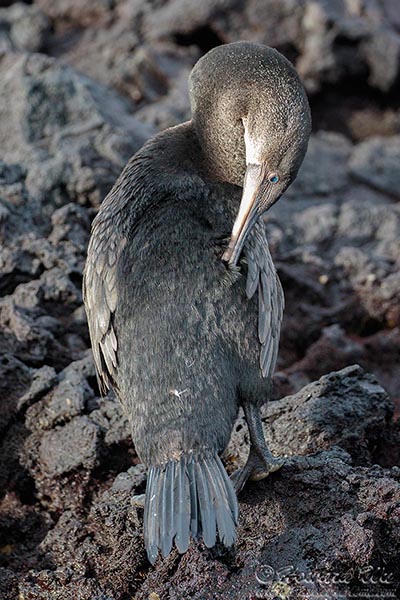
Flightless Cormorant
In the afternoon we reached Tagus Cove on the western side of Isabela Island, almost directly facing Fernandina Island in the east. This was another one of the highlights of the trip (if I had to pick highlights), and we definitely had the best snorkeling session on this trip. In the calm waters of the protected cove, we saw many tropical fishes, sea turtles, and even the Galapagos Penguins (not photographed). I had a small Olympus TG-5 underwater camera with me and took some pictures (I did not have "serious" underwater photography equipment, so these pictures are not up to par with my usual quality).
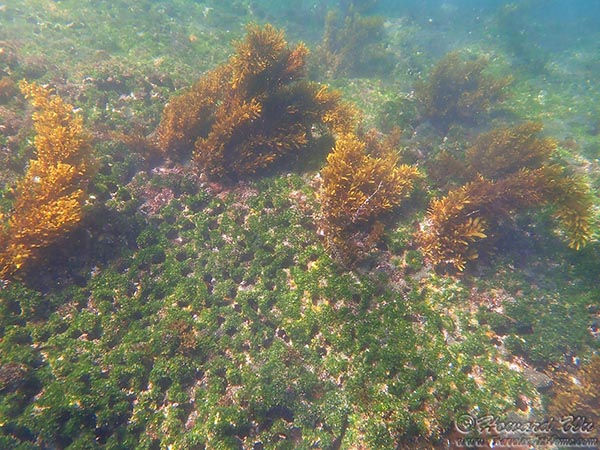
Underwater Pasture
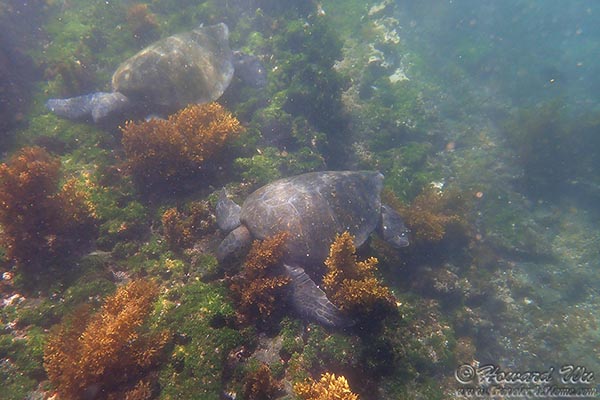
Sea Turtle
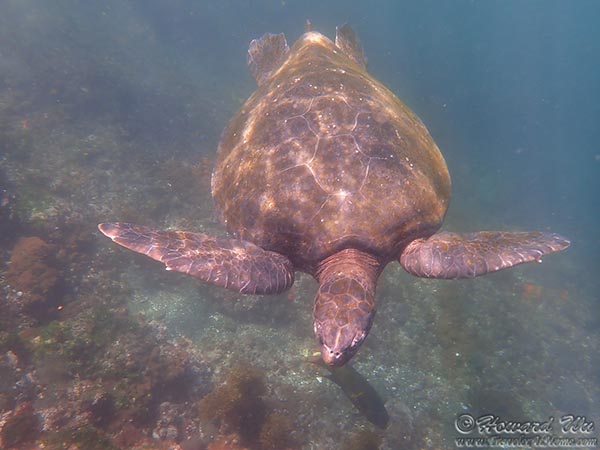
Sea Turtle
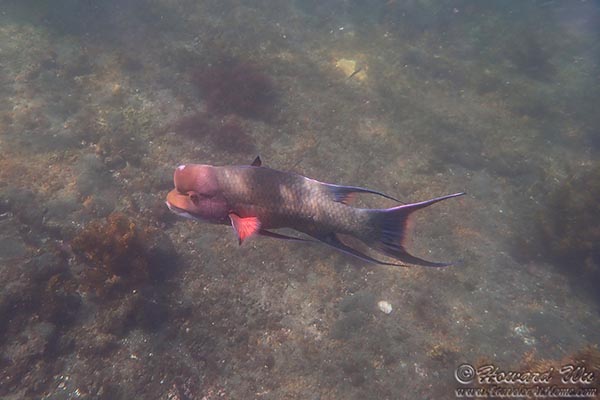
Fish (Mexican Hogfish?)

Fish (Bullseye Pufferfish?)
At Tagus Cove we also had one of the best hikes of the trip. After we rested after the snorkeling session, we landed on the island and started the hike. As we walked up the hill, we saw many small birds, mostly Darwin's Finches and occasionally a Galapagos Flycatcher. I think these are Medium Ground Finches, with the black-plumaged male posing nicely for me to give excellent views of its bill.
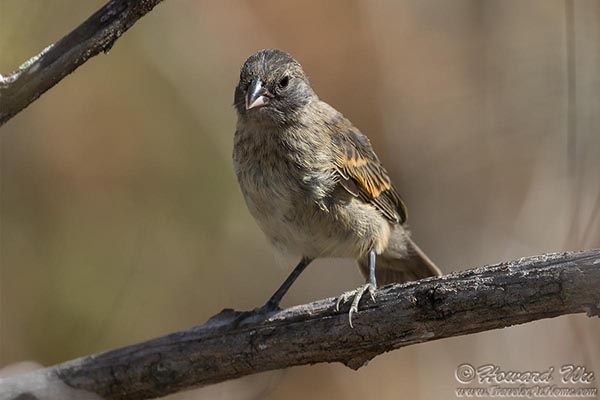
Darwin's Finch (Medium Ground Finch?)
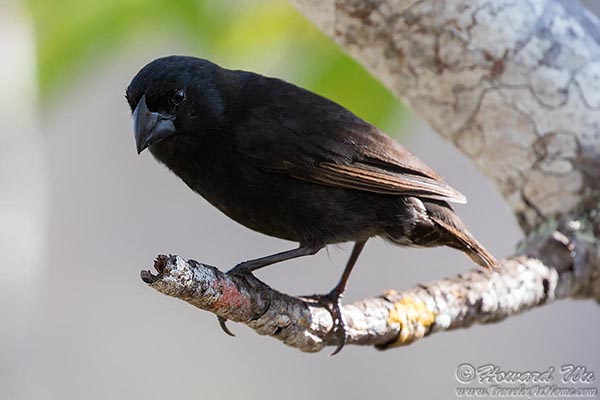
Darwin's Finch (Medium Ground Finch?)
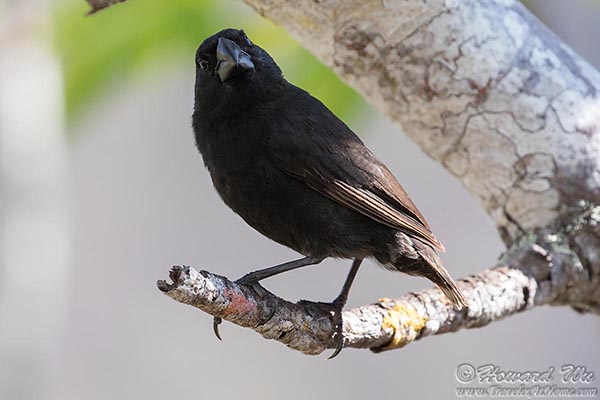
Darwin's Finch (Medium Ground Finch?)
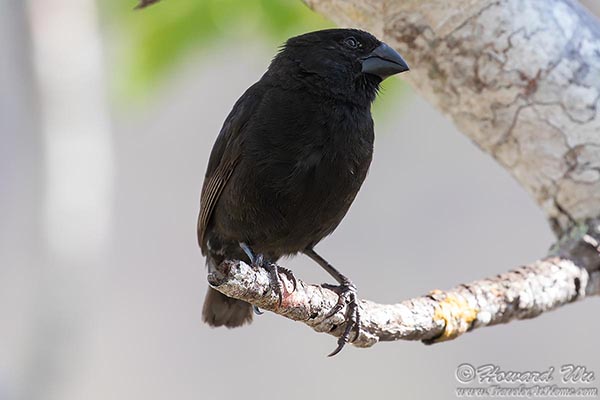
Darwin's Finch (Medium Ground Finch?)

Galapagos Flycatcher
There were also many Lava Lizards scuttling on the ground, some very colorful.
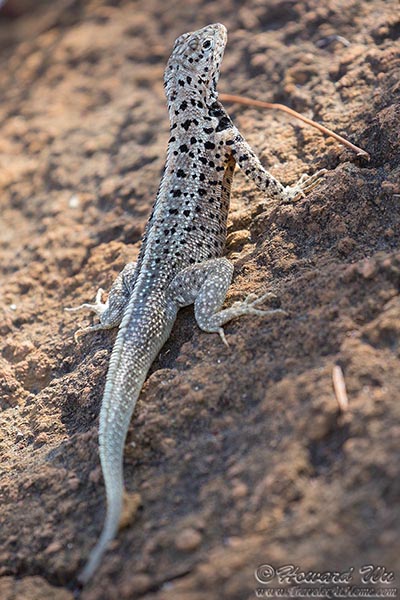
Lava Lizard
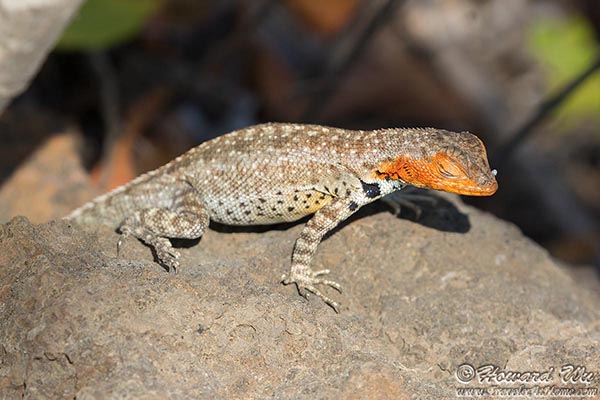
Lava Lizard
We eventually reached the caldron of a crater that forms the rim of a saltwater lagoon which Charles Darwin described in his The Voyage of the Beagle (Darwin went down to the lagoon after an arduous descent hoping to find fresh water, only to find out that the water in the lagoon was actually saltier than sea water).
Regardless of the salinity of the lagoon, it certainly is beautiful with its nearly symmetric shape and turqoise water turquoise under the equatorial sun. Beyond the ridge of the caldron that separates the lagoon from Tagus Cove, we could see our yacht anchored there.
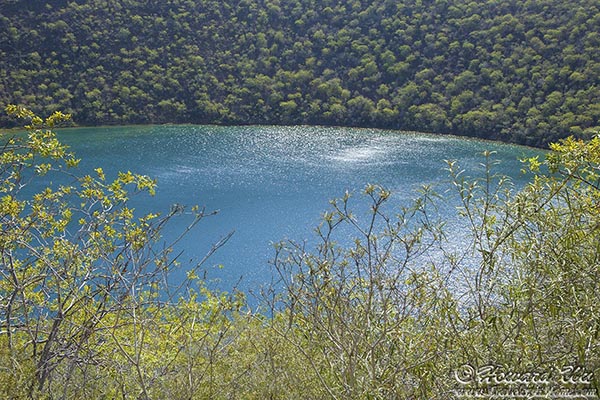
Lagoon

Lagoon
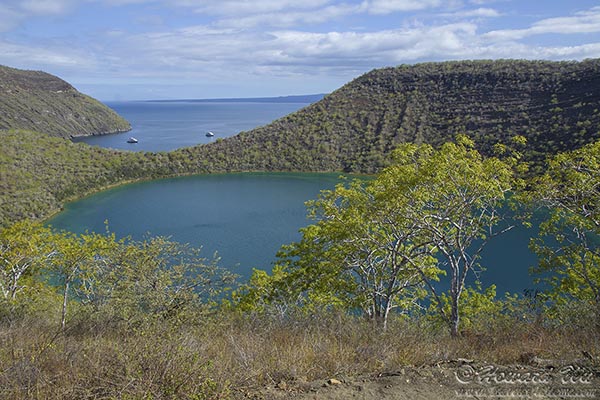
Lagoon
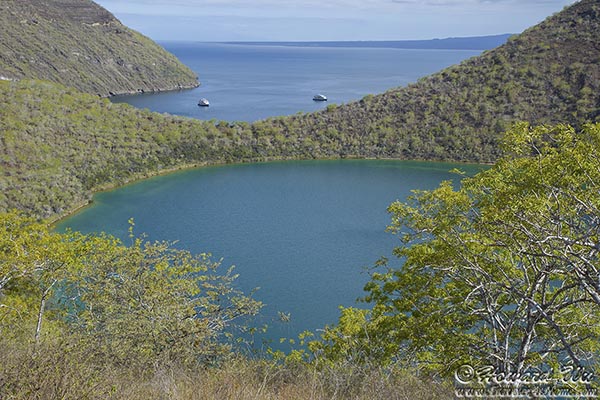
Lagoon
Going back, I snapped these pictures of Tagus Cove from the landing spot.
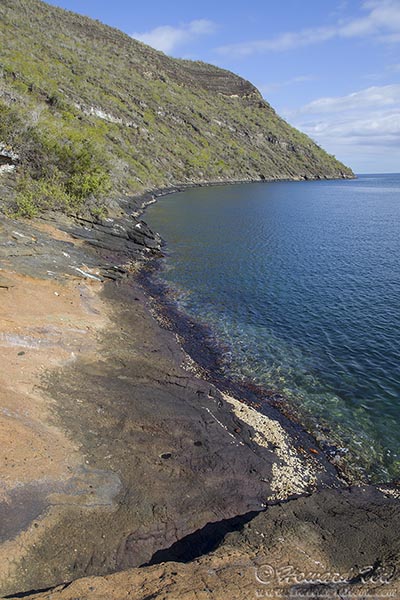
Tagus Cove
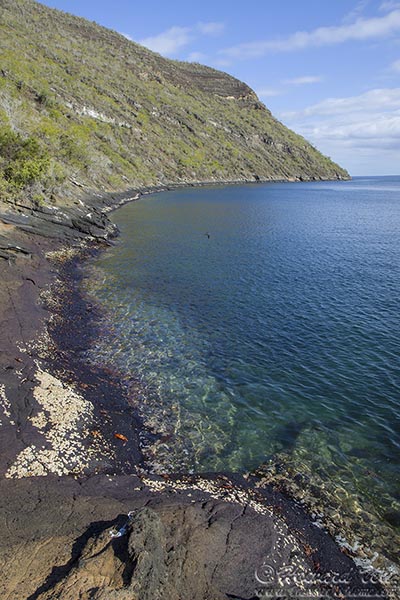
Tagus Cove
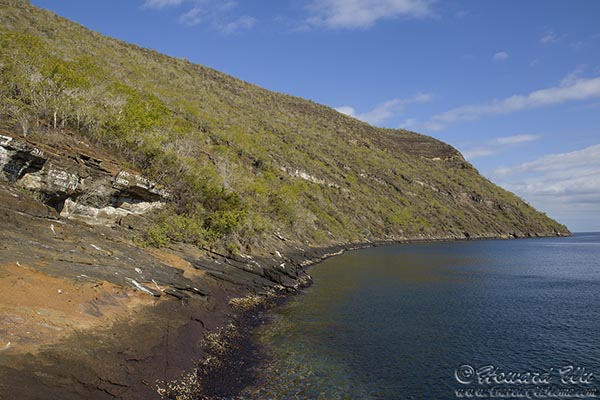
Tagus Cove
Our panga took a tour of the cove. On some of the rocks, we saw some nesting Flightless Cormorants.
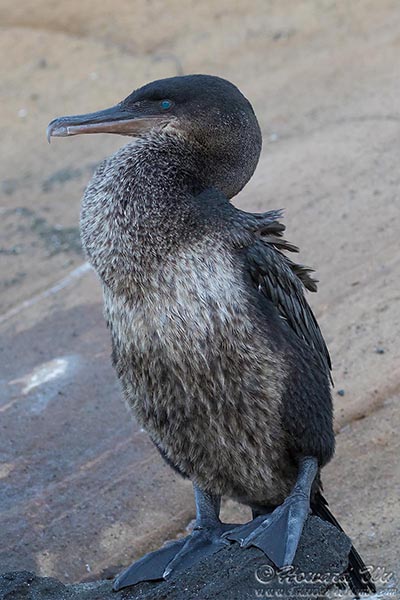
Flightless Cormorant
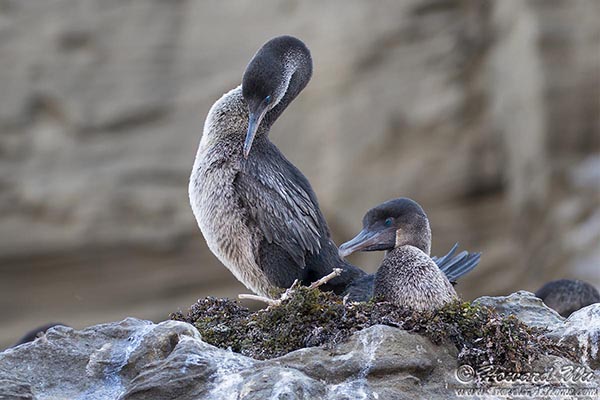
Flightless Cormorants
But the highlight of Tagus Cove, and probably one of the best on this trip, was seeing the Galapagos Penguins up close. This was the first time I had ever seen penguins in the wild, and the Galapagos Penguins are the only ones that nest near the equator.
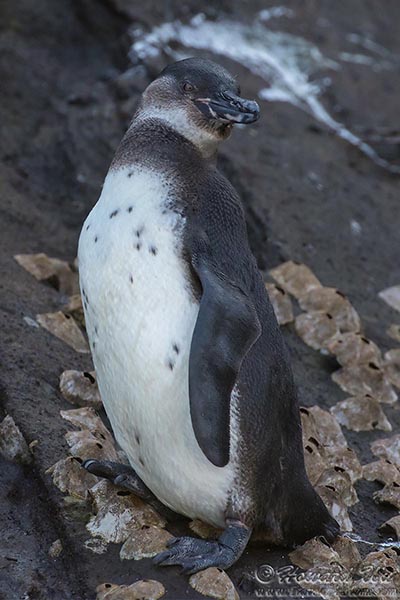
Galapagos Peguin
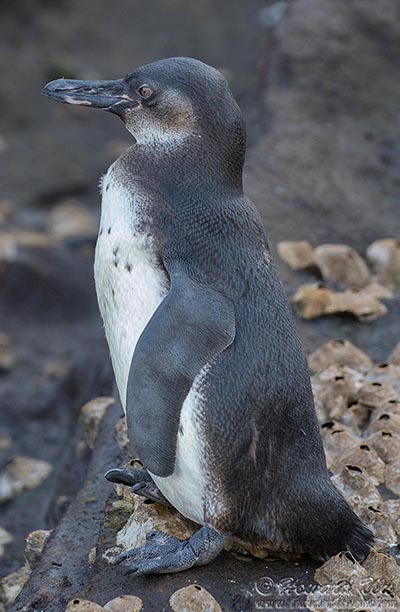
Galapagos Peguin
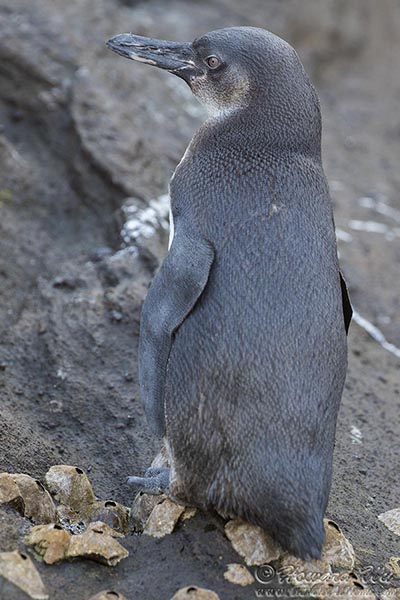
Galapagos Peguin
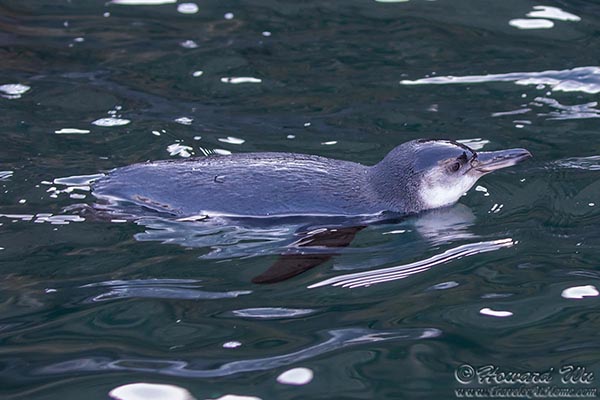
Galapagos Peguin
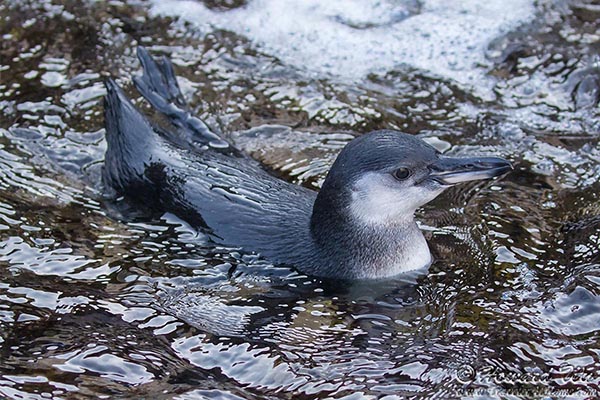
Galapagos Peguin
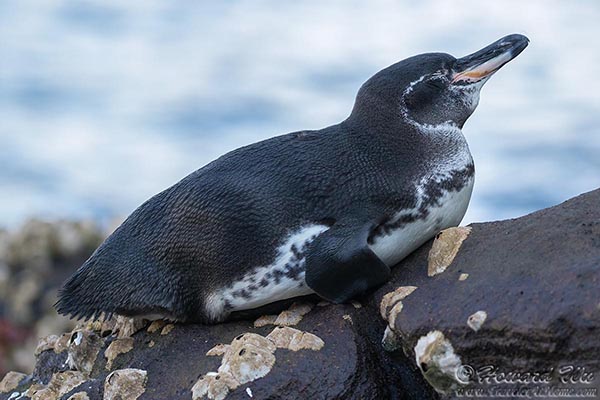
Galapagos Peguin
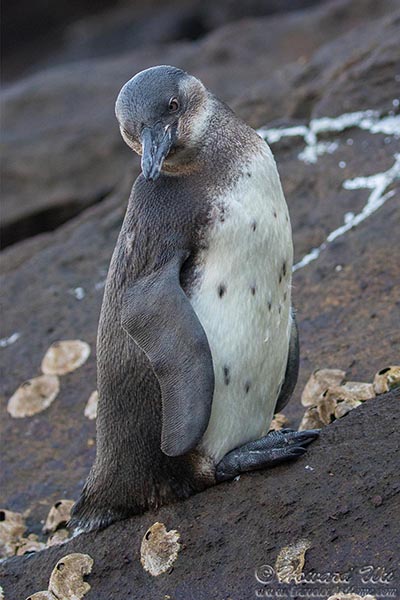
Galapagos Peguin
As our yacht weighed anchor and left Tagus Cove, we watched the islands receding from us. We would leave the western part (Isabela and Fernandina islands) of the archipelago and cross the equator for the last two times (first going north, then south) and be on the return leg of our cruise now.

Island (probably part of Isabela)
As we sailed into the open ocean, we had one of the most memorable experiences while on the yacht: from the sun deck, we watched a mixed group of dolphins and whales (probably Bottlenose Dolphins and False Killer Whales respectively) having a feeding frenzy, with many sea birds joining the foray. They were a little too far for good photography, but the spectacle was certainly exciting to behold.
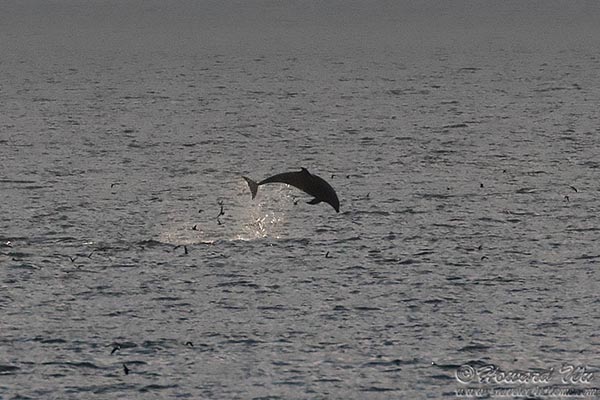
Dolphin
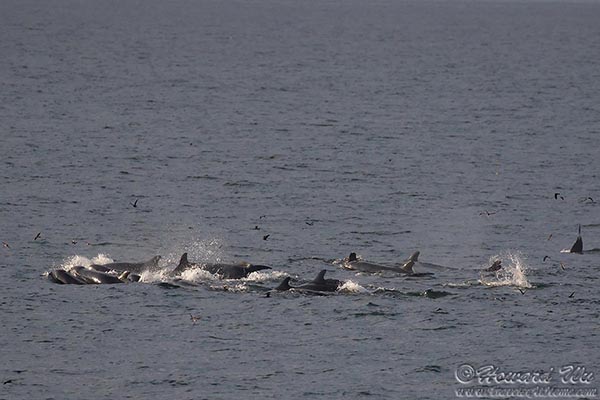
Whales
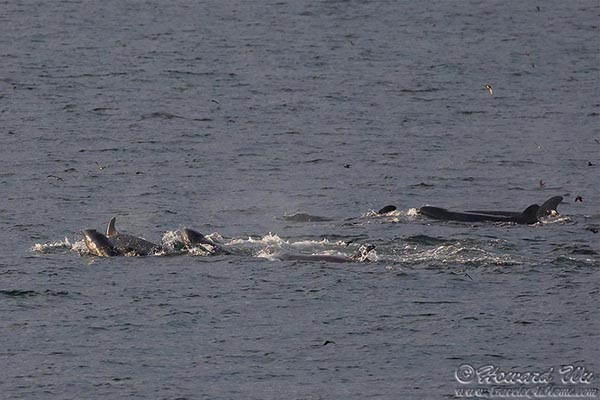
Whales

Whales
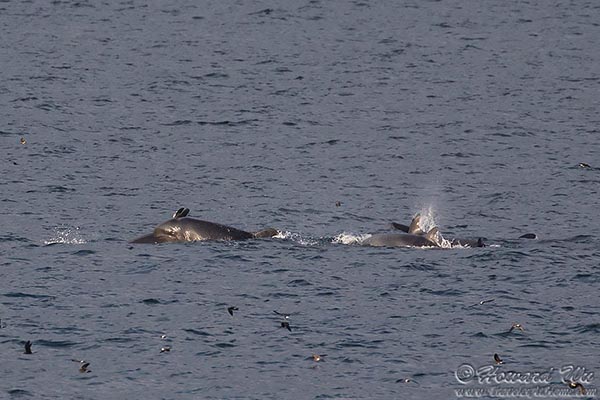
Whales
Later, when I was on the sun deck alone, I saw the layered clouds with an opening near the horizon and I sensed that something was about to happen, so I skipped the cocktail hour to stay on deck.
And I was right! Suddenly the sun dropped below the clouds. First only a sliver of bright light, then slowly the brightness intensified and the blinding disk enlarged. Steadily the sun moved down, nearly (but not entirely) vertically, toward the horizon. Everything lined up on this day - the gap between the clouds and the horizon was just large enough to show the allow the entire sun to shine through! This was one of the most spectacular sunsets, and one closest to the equator, that I have ever seen.
Mesmerized, I watched in awe as the sun disappeared completely below the horizon.

Sunset
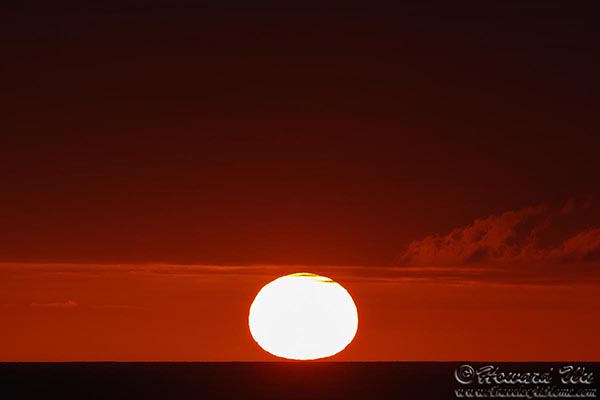
Sunset
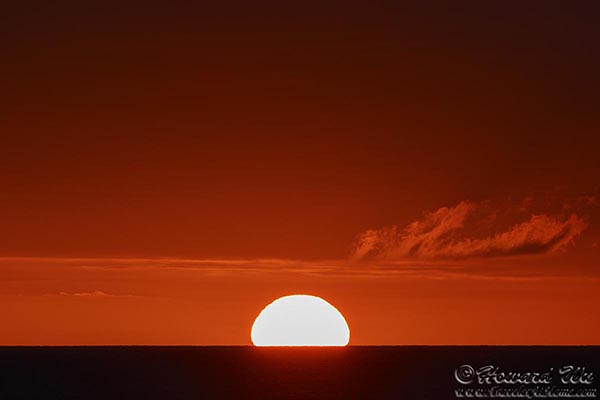
Sunset
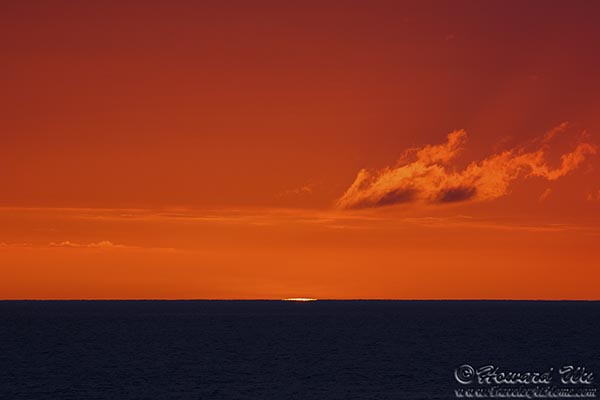
Sunset
Click the image below to return to the index page of Spring 2018 trip to the Galapagos:
